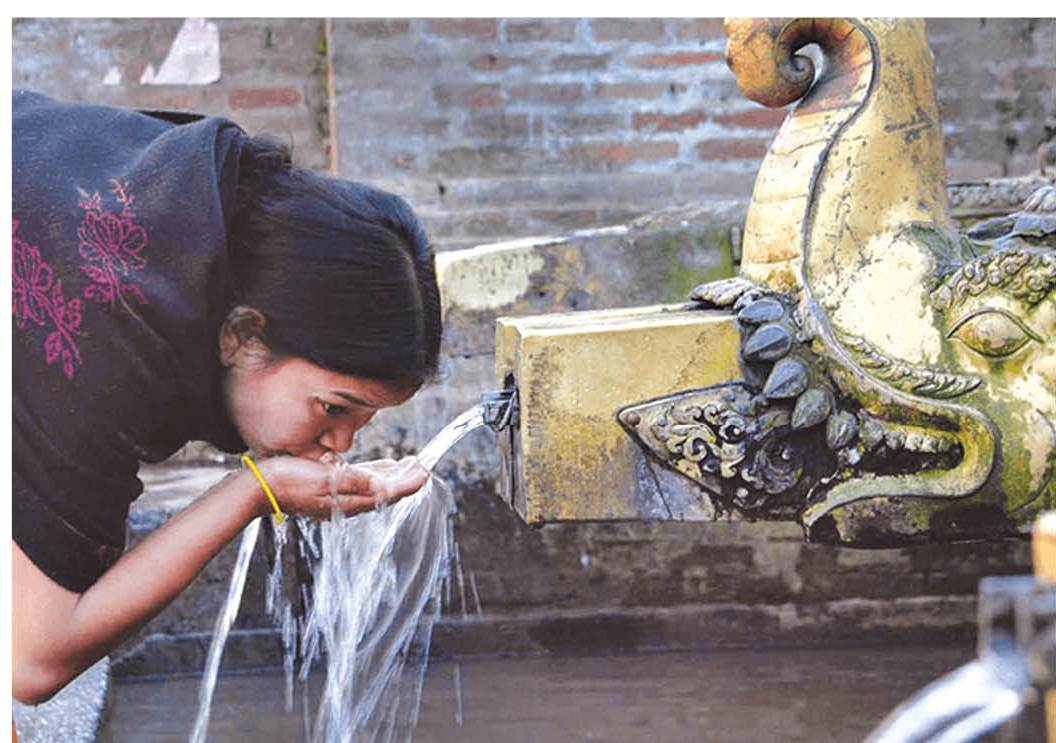Hindu Kush Himalaya towns facing water insecurity

By A Staff Reporter
Kathmandu, Mar 4 : The Himalayan towns of Nepal and other countries in the Hindu Kush Himalayan (HKH) region are facing increased water insecurity in the wake of inadequate urban planning coupled with a rapidly changing climate, a study report shows.
A recent study covering 13 towns across four countries—Nepal, Bangladesh, India and Pakistan, in the HKH) region shows the interlinkages between water availability, water supply systems, rapid urbanisation, and consequent increase in water demand. These trends, both daily and seasonal, are leading to increasing water insecurity in towns in the HKH region.
The study, the first-of-its-kind to be conducted in the HKH region, shows that water insecurity is attributed to poor water governance, lack of urban planning, poor tourism management during peak season, and climate related risks and challenges.
The study, published in the journal Water Policy, also shows that communities are coping through short-term strategies such as groundwater extraction, which is proving to be unsustainable.
There is a lack of long-term strategies for water sustainability in urban centres, and this requires the special attention of planners and local governments.
Based on the findings of the HI-AWARE research project undertaken by the International Centre for Integrated Mountain Development (ICIMOD) and partner organisations, the study suggests that urbanisation has pulled people from rural areas in the region into nearby urban centres.
Although only 3 per cent of the total HKH population lives in larger cities and 8 per cent in smaller towns, projections show that more than 50 per cent of the population will be living in cities by 2050. This will naturally place tremendous stress on water resources. The study, published in a special issue of Water Policy journal, shows that the water demand-supply gap in eight of the surveyed towns is 20 per cent–70 per cent.
There is a high dependence on springs (ranging between 50 per cent and 100 per cent) for water supply in three-fourths of the urban areas. Under current trends, the demand–supply gap may double by 2050.
A holistic water management approach that includes springshed management and planned adaptation is therefore paramount for securing safe water supply in the urban Himalaya, the report points out.
Along with springshed management, other options could be explored in the wake of rising water demand and use.
From the case studies of the Himalayan towns, it has become evident that increasing urbanisation and climate change are two critical stressors that are adversely affecting the biophysical environment of the urban Himalaya. With development plans and policies focusing more on rural areas, issues surrounding urban environments have been sidelined.
Across the region, the encroachment and degradation of natural water bodies (springs, ponds, lakes, canals, and rivers) and the growing disappearance of traditional water systems (stone spouts, wells, and local water tanks) are evident.
The degradation and reclamation of water bodies affect wetland ecosystems and reduce retention capacities that prevent flooding. Consequently, urban drainage and flood management systems are being impaired. The study points towards five important issues concerning water insecurity in the urban Himalaya.
First, water needs to be sustainably sourced to bridge the gap between supply and demand. Given that spring water is the only (and inadequate) source in many Himalayan towns, sustainable sourcing could be done by increasing budgetary allocations for reviving and protecting springs, increasing water harvesting, and diversifying water sources.
Second, water governance and management need to consider issues and services beyond water utilities. A polycentric governance system – which would involve multiple governing bodies and institutions interacting with one another to ensure access to water – could be a more suitable water governance model in Himalayan towns and cities.
Third, the equitable distribution of water needs more attention. The poor and marginalised communities are most affected when water supply dwindles. Many cities are faced with the challenge of providing access to safe water for the poor, especially during the dry season when supply decreases.
Fourth, women’s multiple roles in water management need to be recognised, and their role in the planning and decision making processes needs to be reviewed and strengthened.
Finally, mountain cities need to be viewed in the broader context of mountain water, environment, and energy. Climate change impacts on these sectors are presenting new and growing challenges to Himalayan towns and cities that require innovative solutions.
Recent News

Do not make expressions casting dout on election: EC
14 Apr, 2022
CM Bhatta says may New Year 2079 BS inspire positive thinking
14 Apr, 2022
Three new cases, 44 recoveries in 24 hours
14 Apr, 2022
689 climbers of 84 teams so far acquire permits for climbing various peaks this spring season
14 Apr, 2022
How the rising cost of living crisis is impacting Nepal
14 Apr, 2022
US military confirms an interstellar meteor collided with Earth
14 Apr, 2022
Valneva Covid vaccine approved for use in UK
14 Apr, 2022
Chair Prachanda highlights need of unity among Maoist, Communist forces
14 Apr, 2022
Ranbir Kapoor and Alia Bhatt: Bollywood toasts star couple on wedding
14 Apr, 2022
President Bhandari confers decorations (Photo Feature)
14 Apr, 2022











